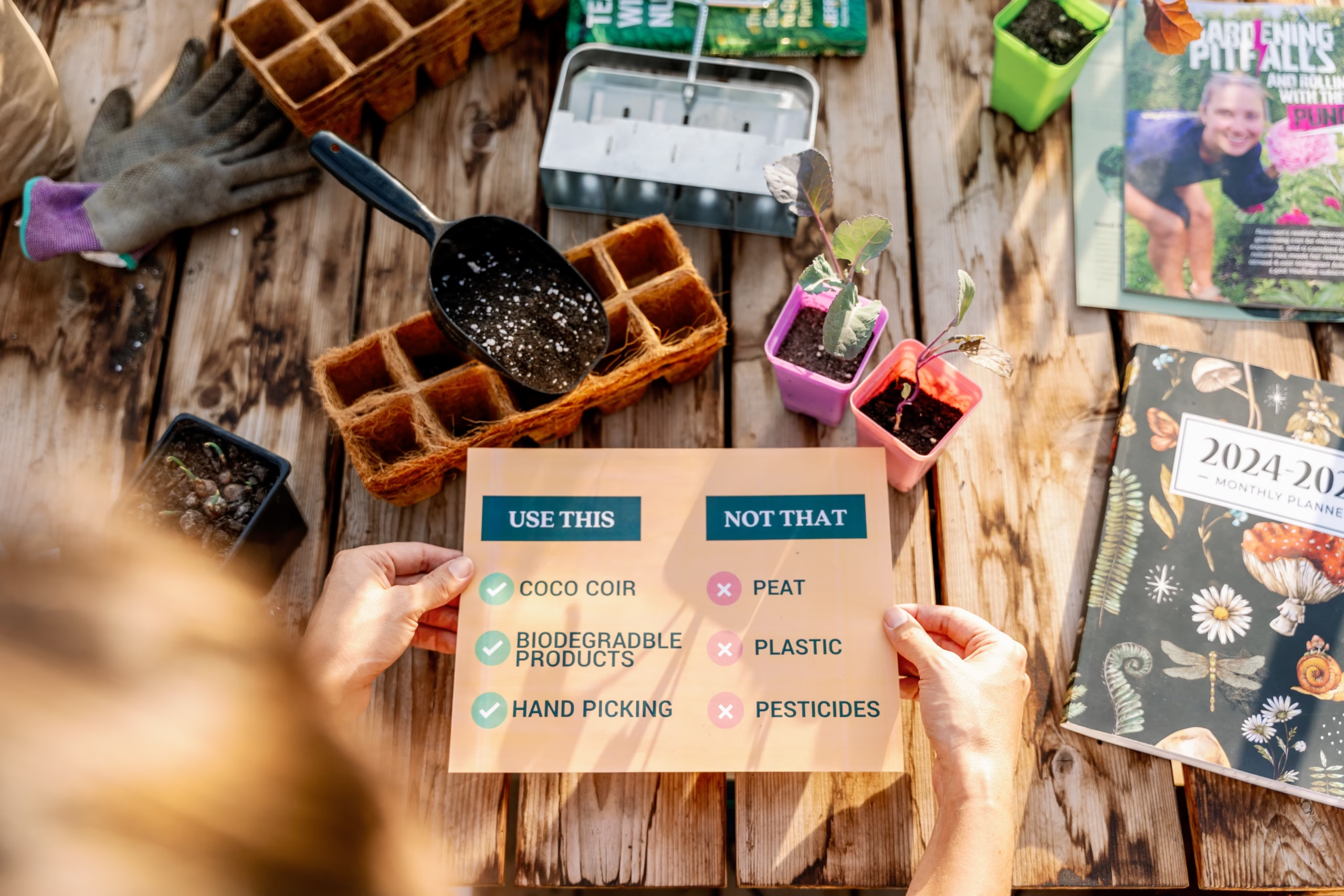
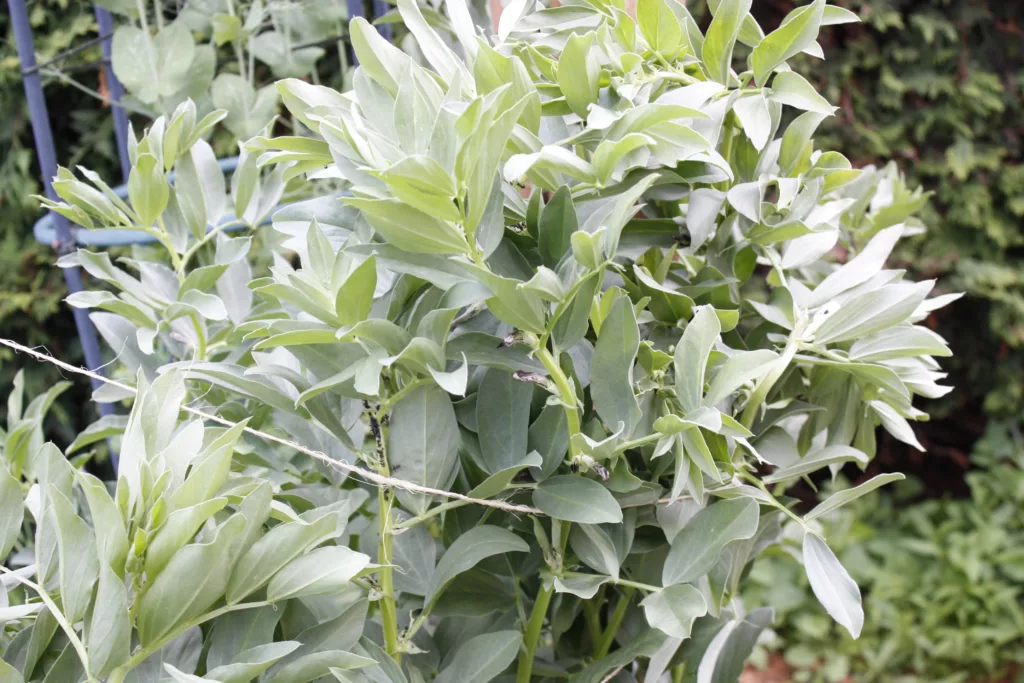
Broad beans are an underrated garden vegetable here in Canada. I don’t know many people who grow them but they are the perfect addition to any garden. You may have heard broad beans called faba beans or fava beans – what’s the difference? There isn’t one! It’s time we take note from other countries around the world and add broad beans to our gardens!
Broad beans are a cold-tolerant plant that produce large green bean pods. Inside of the pods are green beans that look somewhat similar to shelled edamame. They are tall, upright plants that grow quickly and produce well. They’re perfect for spring and fall gardens because they can handle cold temperatures and still produce.
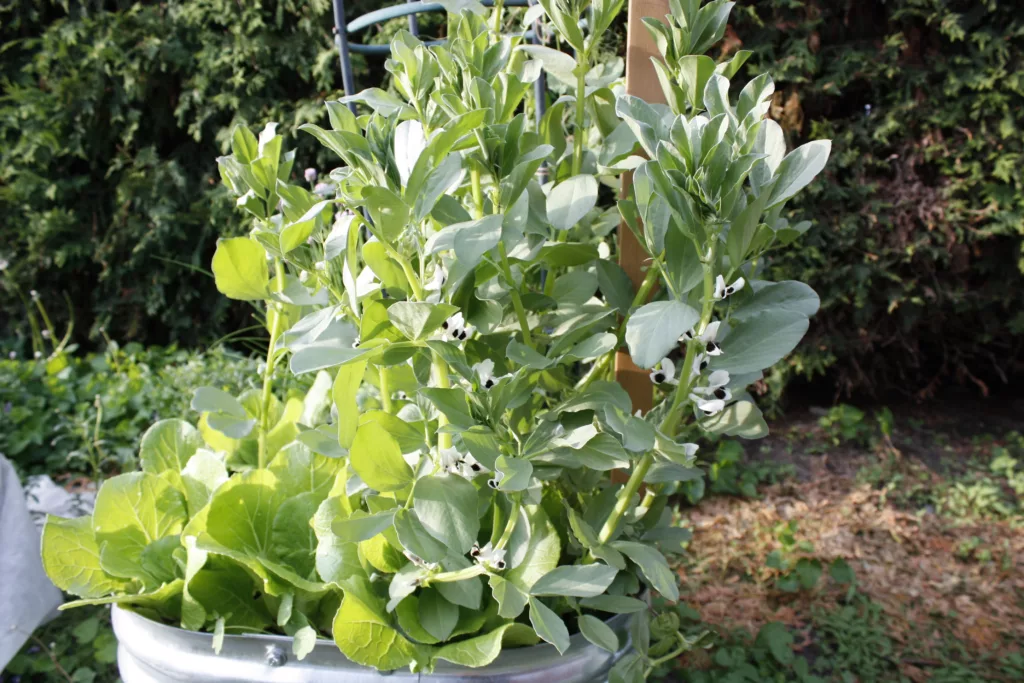
The most common broad bean variety on the market here is Windsor. There are two types of broad beans, longpods and Windsor (short pods), but when buying seeds you’re most likely to come across Windsor at the major seed retailers. Since this vegetable is less popular here, you won’t find as much variety as you would in other countries – however if you look hard enough you can find other varieties.
Broad beans will grow in most soil types, however they do prefer loam. Plant them in a sunny location, although they can handle part shade.
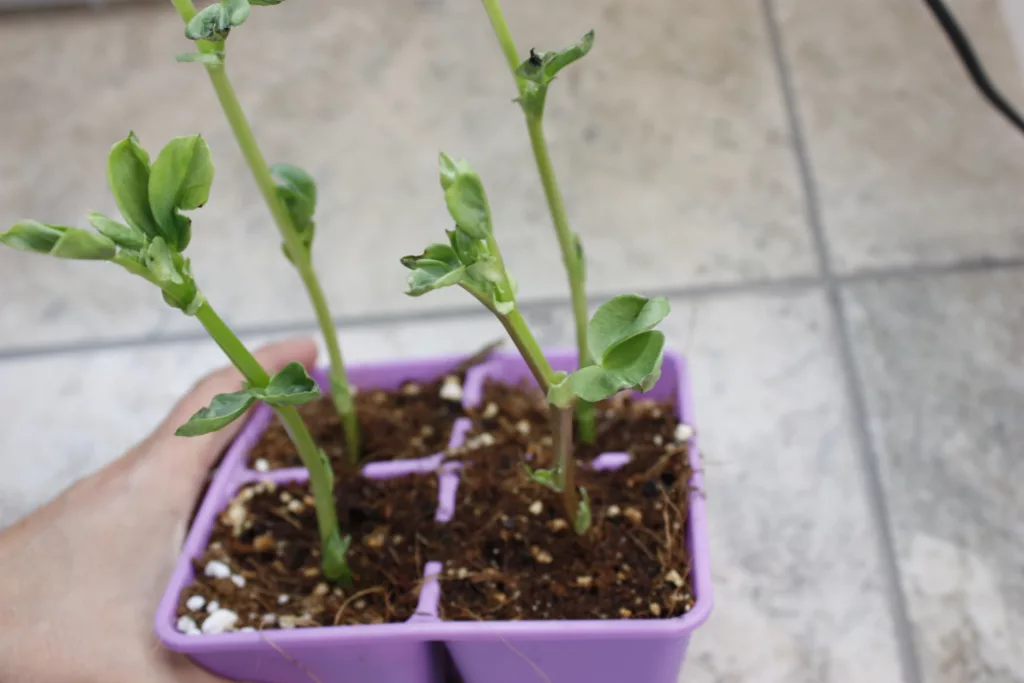
In the picture above you’ll see broad beans that I started indoors in the past – I don’t recommend it. When started inside the stems are thin and frail, and the plants get stretchy, even under good lighting. When the seedlings get planted outdoors they often will start new stems from the base and abandon the stems grown indoors.
With that said, sow your seeds directly outdoors in the garden in early to mid-spring, under cover. Broad beans are cold-tolerant and can be planted before your last frost date to get an early harvest. I have planted my broad beans out 6 weeks before my last frost, under cover, and had success growing them, so I highly recommend experimenting on timelines!
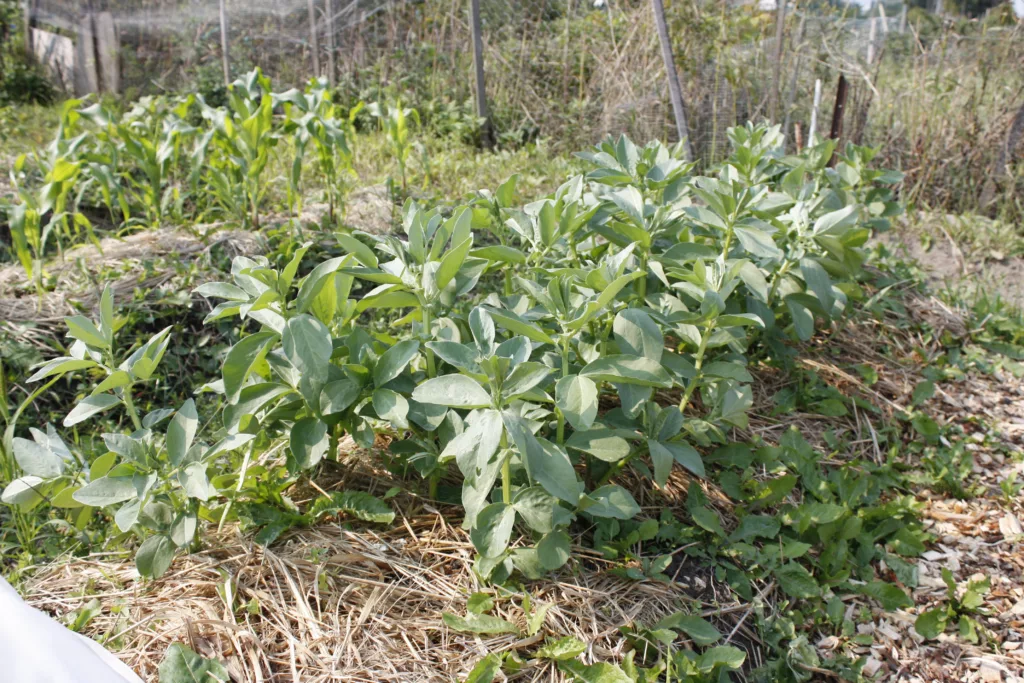
Broad beans are very easy to care for. Water them regularly and provide them support as they grow tall and upright and often can be knocked over by rain. You can support each plant individually, but I’ve found the best way to support them is to put 4 stakes at each corner and make a sisal rope fence to hold them together (see the first picture in this article for an example).
Broad beans can be harvested at any size from small to 4-5 inches in length. When the pods are small you can eat the entire pod, however I’ve tried it before and, personally, I will never eat them this way. When the pods get to around 5 inches in length, pick the pods and peel them to get access to the beans.
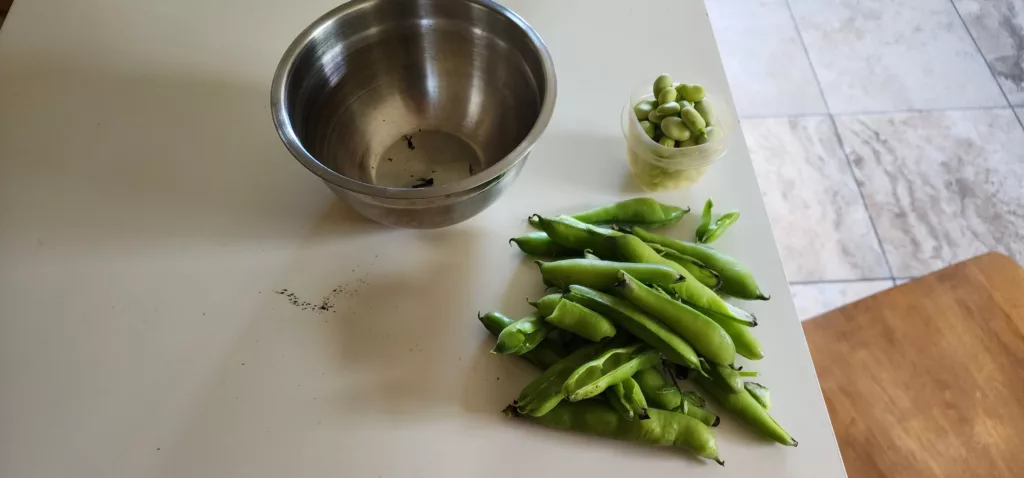
We love to eat our broad beans in stir fry! They’re the perfect addition to get some added protein into your diet and fit the dish perfectly. They are a versatile crop and can fit into any dish from stir fries to soups.
When peeled, they also freeze really well. If you find yourself with too many beans freezing them for later in the season is the perfect way to store them.
Broad beans are often used as cover crops because of their cold tolerance and since they are in the bean family they fix nitrogen in the soil. I haven’t tried growing them as cover crops before but do like to rotate growing them around my garden for that nitrogen fixing aspect. If you are getting into cover cropping it’s definitely worth trying broad beans since you can get food from them and the benefits of cover cropping!
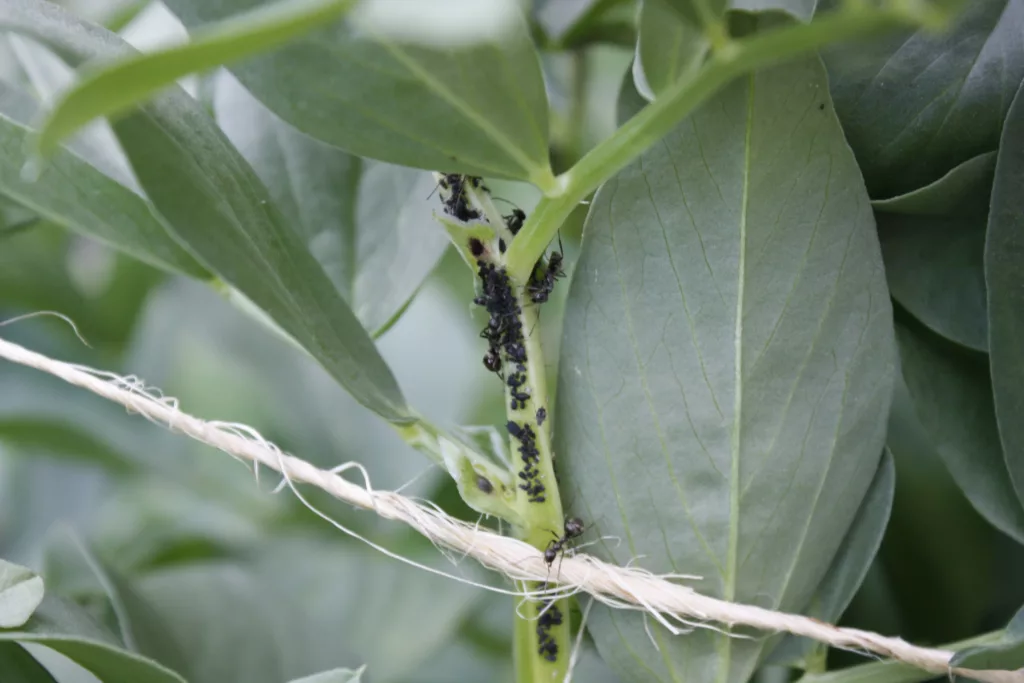
The most common pest issue with broad beans are black aphids, also called black fly. If you notice ants walking up and down your plants then it’s time to start inspecting for these pests. The ants farm these aphids so you will always see one with the other which is helpful for identification.
Luckily, it’s super easy to manage these pests. They target the top of your plants, so find the lowest section of your plant that has black fly on them and cut the tips off. That’s it! Your plant will continue to grow and produce for you until its season is over.
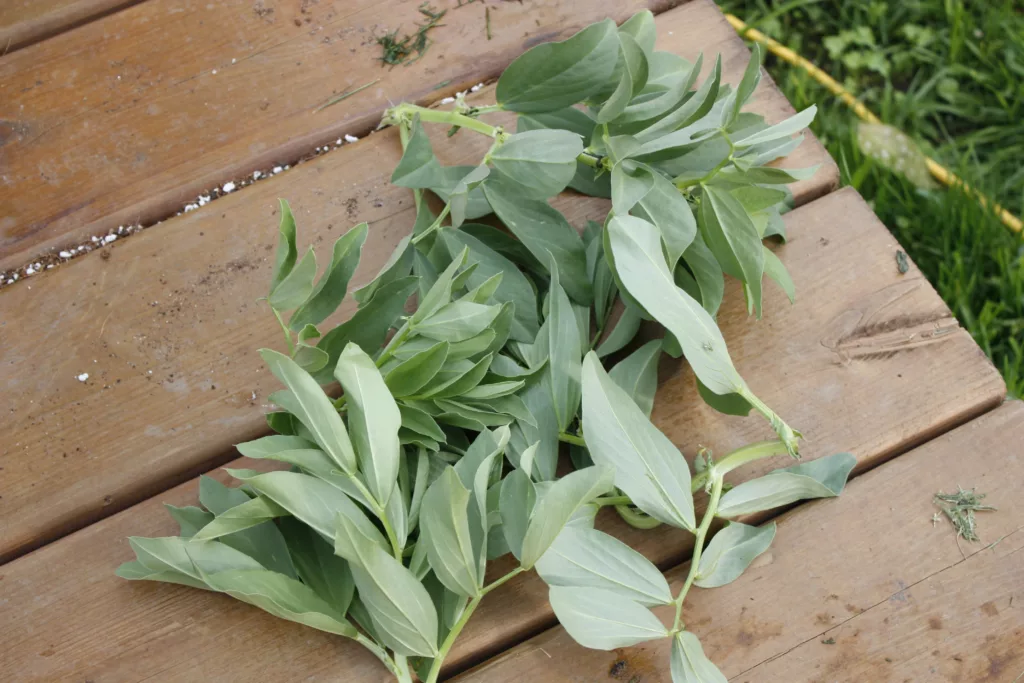
Beans are one of the easiest vegetable to save from, and broad beans are no different. To save seeds, leave some pods on the plant until they start to turn brown and dry out. Wait until the pod is completely dry and then peel the pods to get to the beans. Save the seeds in a cool, dry place until next season!

Gardening Advice for Short Season Gardeners
Privacy Policy • Terms and Conditions
© 2025 by Urban Gardening Canada